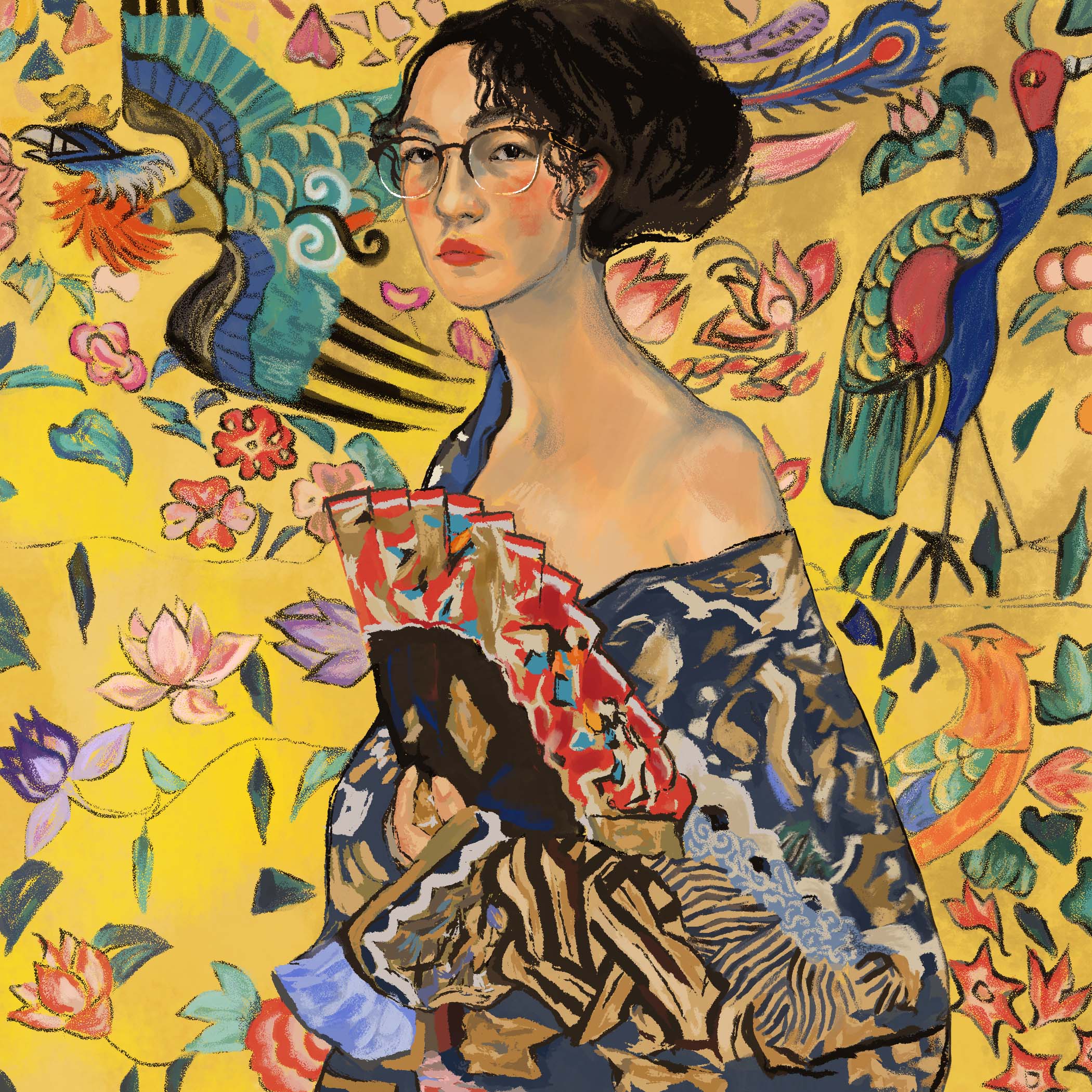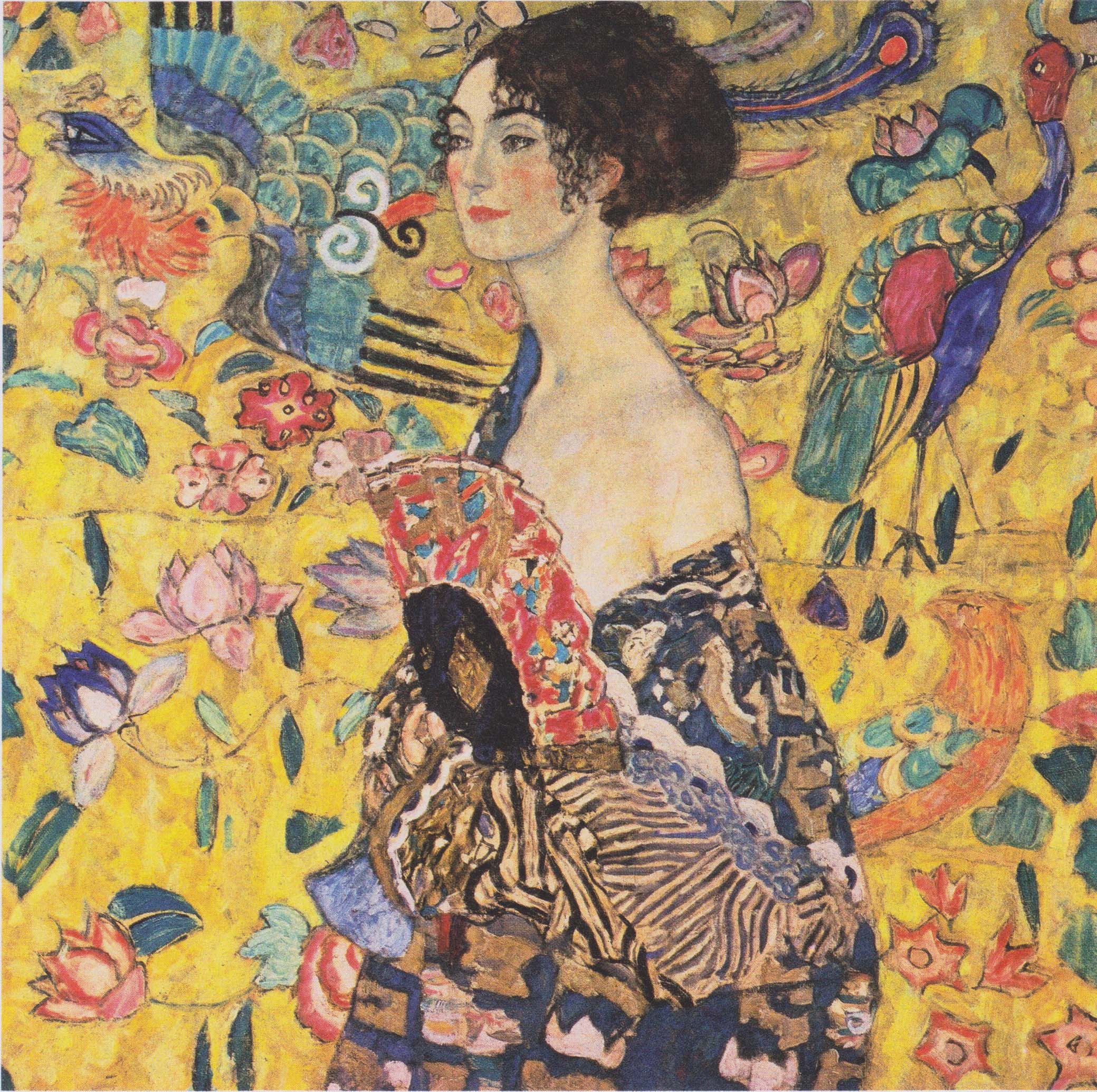87/100
Lady with a Fan
-
Artist
Gustav Klimt
-
Year
1917
-
Culture
Austrian
-
Date of Copy
This painting was a small meditation on Orientalism. I'd been wanting to do a Klimt eventually, and I'd read that he collected Chinese art and would sometimes feature it in the backgrounds of his paintings. I felt a little strange about it--they seemed to be background decor to him, just a mass of lines and colors to embellish his European portrait clients with. When I saw this particular painting I especially noticed the East Asian fan and robe, which also seemed to be used without any real context or reason besides pure ornamentation. (For example, the robe is falling sexily off this lady's shoulder, even though that's not how most Asian clothes would normally be worn.) This master copy project had gotten me thinking about Orientalism, and I thought it would be interesting to put myself into this painting and thereby reclaim those elements and give them back their context. Of course, I also liked that it's just such a striking image formally.
I did make a few small but meaningful changes in my copy. This woman's gaze is vacant, and she's smiling about nothing. I made myself looking back at the viewer confrontationally instead. I also moved the robe not be falling off quite so much. I think because Europeeans saw Asian societies as sexually wanton and less civilized, wearing East Asian style robes was an excuse to look sexier than usual. I didn't feel comfortable sexualizing any entry in my project since they were self-portraits. Covering this one up a little more also made me think about the oversexualization of Asians in general.
I think Klimt was simply a lover of feminine beauty, who loved to pay tribute to it in his art. Artists have been guilty of worse things. But as part of that he seemed to include random East Asian elements to evoke an exotic eroticism. That eroticism is a connotation that he and other westerners made up, not something that's really emphasized any more in East Asia than it is in the west. I'm flattered he collected Chinese object's d'art, but am also slightly offended that he didn't seem to understand them beyond a surface appreciation. They were always just background elements to make white women look more interesting. This Portrait of Fredericke Maria Beer drove that home for me.
This entry might be the one that best encapsulates this project's opposing goals of tribute and critique. Because I do love the painting, but it annoys me at the same time.
One last fun fact: This was one of Klimt's last paintings, still on the easel at his death.
Reference image is from WikiArt. It is now in the Belvedere in Vienna, Austria, on loan from a private collection.

